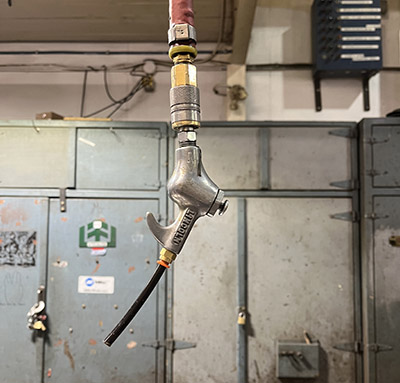
Despite being in force since the early 1990s, compressed air auditors frequently run across compressed air safety hazards when studying their client’s sites. Fig. 1 is a common example where blow guns installed for cleaning have been modified by machine shop personnel. This gun, if the tip is blocked, will deliver over 100 psi to the tip. Should the blockage be a human, a potentially deadly embolism may be developed under the skin.
A quick internet search turns up some fatalities worldwide, usually caused by horseplay, causing death due to compressed air unexpectedly entering a person through various orifices. A gruesome thought.
Occupational Safety and Health Administration (OSHA) standard 29 CFR 1910.242(b) has long since been in force to prevent these occurrences, and requires that compressed air used for cleaning purposes must be reduced to less than 30 psig (pounds per square inch gauge, 204 kPa).
It also states that compressed air used for cleaning must only be permitted with effective chip guarding and personal protective equipment to protect the operator and other employees from the hazards of the release of compressed air and flying debris.
Standard 1917.154, which addresses similar hazards in the maritime industry, explicitly prohibits the use of compressed air for personnel cleaning. While this particular requirement is not specifically applicable in the general industry setting, OSHA recognizes it as good practice for all industries.
Industrial facilities with excellent safety practices address these safety hazards by ensuring all compressed air blowing, if needed is supplied by specialty nozzles that meet the OSHA requirements. Many outlaw personal blowing of compressed air to clean dust from clothing, opting instead to use low pressure electric powered cleaning stations that use low pressure compressed air sources, not only safe but also energy efficient.
Blowing devices designed to meet the OSHA requirements are plentiful and easily obtained. Don’t put your staff at risk by allowing inappropriate compressed air blow guns!
A nice guide to the OSHA blowing regulations appears here: osha.oregon.gov/OSHAPubs/factsheets/fs77.pdf
Filed Under: Components Oil Coolers, Compressed Air Technologies, Pneumatic Tips